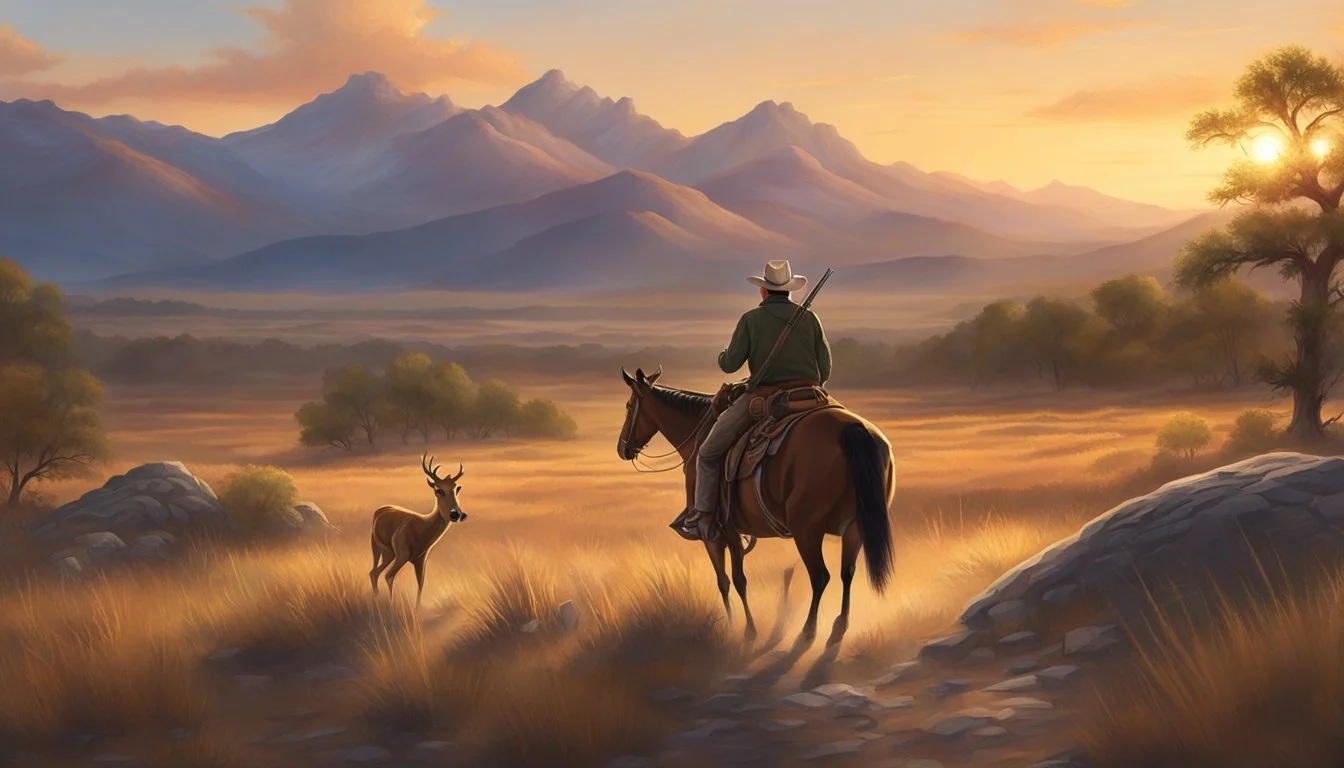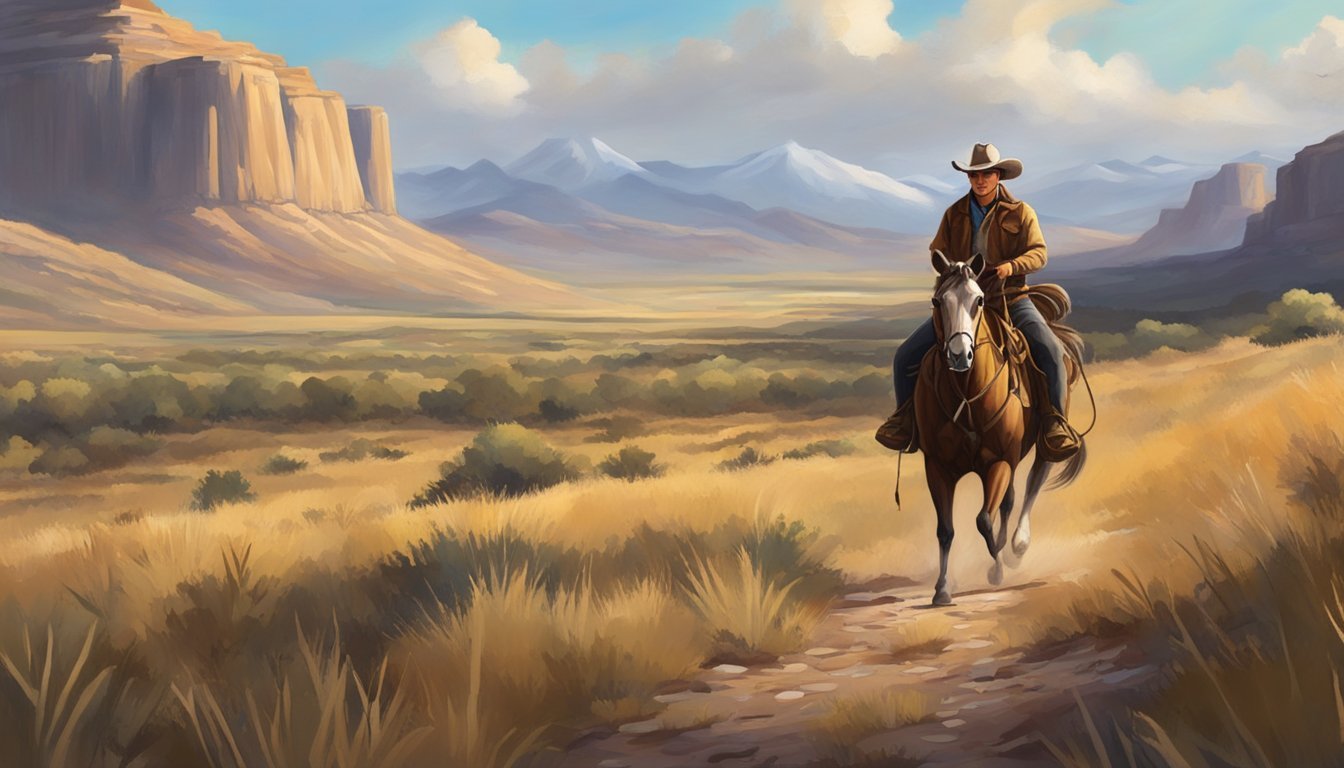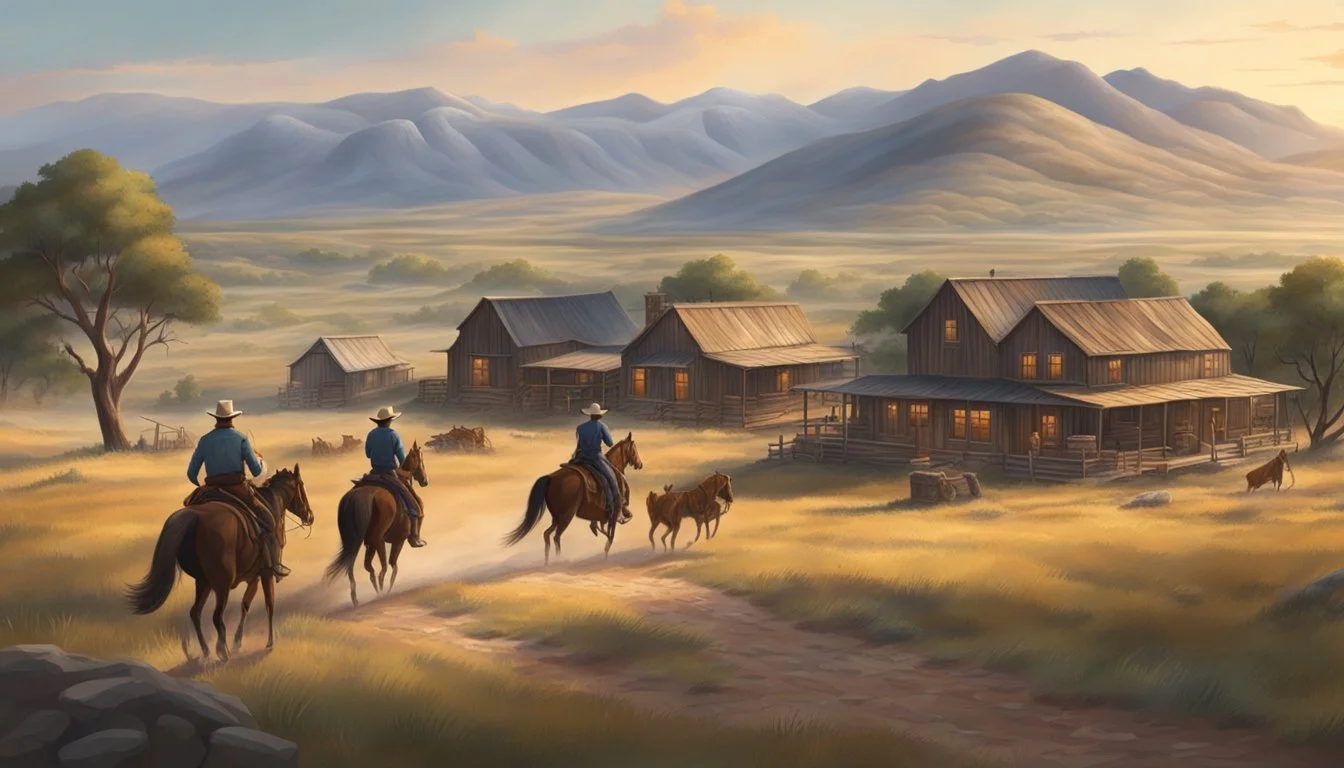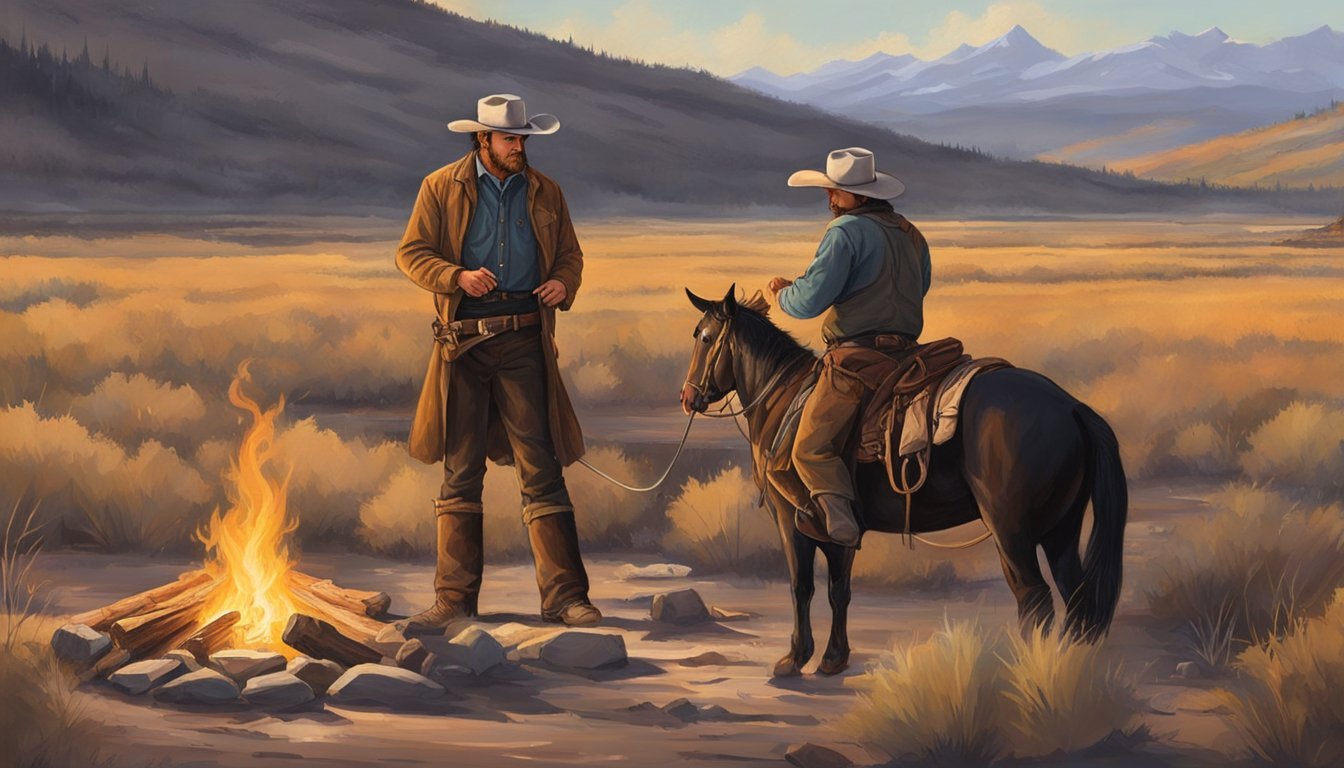The Texas Cowboy's Guide to Hunting and Game Preparation
Essential Tips for a Successful Hunt
Hunting in Texas is not just a pastime; it's a way of life that echoes the traditions laid down by the rugged cowboys of yesteryear. With its vast and varied landscape, the Lone Star State offers an experience that caters to hunters with differing levels of expertise, from novices to the seasoned professionals. The state's topography presents hunters with opportunities ranging from the rolling plains in the north to the dense brush lands of the south, making it a premier destination for those pursuing game ranging from white-tailed deer to exotic species that roam private ranches.
Guided by the principles of responsible hunting and respect for the land, modern Texas cowboys continue to embody the spirit of survival and resourcefulness that the frontier once demanded. For a successful hunt, preparation is key. Texas's wide range of weather conditions and terrain types necessitates a thorough understanding of survival skills and the proper handling of game post-harvest. This ensures a safe and ethical outdoor adventure and outlines the importance of conservation and wildlife management practices.
The guide services offered throughout Texas are not only about leading one to the big-bodied, multi-antlered trophies but also about imparting the wisdom of game preparation. Utilizing the knowledge of experienced locals provides invaluable insights, from the ideal hunting spots to the intricate details of field dressing and meat preservation. These services uphold the legacy of the Texas cowboy, coupling time-honored hunting traditions with the commitment to preserving the wild beauty of the state for future generations.
History of Texas Hunting
Texas hunting has a rich tradition, dating back to its indigenous peoples and evolving significantly with the arrival of European settlers. Today, the state's hunting regulations reflect a balance between heritage and wildlife conservation.
Evolution of Hunting Laws
Early Laws:
Indigenous Period: Native American tribes hunted for subsistence, using every part of the animal.
European Influence: With the settlement of Europeans, especially the Spanish, hunting became more regulated.
Modern Regulations:
Texas Parks and Wildlife Department (TPWD): Formed in the 20th century, TPWD regulates hunting seasons, licenses, and methods to ensure sustainable wildlife populations.
Influential Texas Hunters
Notable Individuals:
Famous Rangers and Outdoorsmen: Many Texas Rangers from the 19th century, such as John "Texas Jack" Omohundro, were skilled hunters and contributed to hunting lore.
Conservation Leaders: Modern figures within TPWD have played key roles in shaping hunting guidelines to protect ecosystems while honoring the state's hunting heritage.
Preparing for the Hunt
Before embarking on a hunting excursion in Texas, it's essential for a cowboy to have the right equipment and to understand the importance of safety and training. This preparation is the key to a successful and safe hunting experience.
Choosing the Right Equipment
A hunter must have the appropriate gear that is suited for the terrain and the game being pursued. For big game hunting, a quality rifle is fundamental.
Firearms: Select a rifle that best fits the intended game; for instance, a .30-06 or a .308 Winchester are popular choices for deer.
Optics: Invest in a reliable scope for accurate shooting at a distance.
Ammunition: Use the correct caliber and bullet type for your target species.
Clothing and gear should be chosen with the rugged Texas environment in mind.
Apparel: Opt for durable, camouflage attire that is suitable for the weather and the brush-heavy terrain.
Boots: Choose well-fitting, tough boots that can handle rough terrain and protect against snakebites.
Safety and Training
Before a family or individual takes to the field, a comprehensive understanding of hunting safety and regulations is critical. Safety is a non-negotiable aspect of hunting, both for the individuals involved and the sustainability of wildlife populations.
Hunting Courses: Completing hunter education courses, which include a hunter safety component, is mandatory to ensure that hunters are well-versed in best practices.
Licensing: Each hunter must hold a current hunting license, adhering to Texas state laws.
Hunting Techniques and Strategies
In Texas, hunters employ various strategies to increase their chances of a successful hunt. These techniques are shaped by terrain, target species, and personal hunting style. Here, the focus is on three prominent methods: Spot and Stalk, Still Hunting, and Blind Hunting, each offering unique challenges and advantages for hunters pursuing game such as elk.
Spot and Stalk
Spot and Stalk hunting necessitates a combination of patience and stealth. Hunters must first identify their target from a distance, often utilizing binoculars or spotting scopes. Once they have spotted the game, the approach begins, closing the distance carefully to avoid detection. This technique is effective in the open spaces of Texas where visibility is high, although it requires hunters to be adept at using the natural cover to their advantage.
Key steps in Spot and Stalk Hunting:
Locate game from afar.
Plan an approach route using natural terrain.
Move in silently, frequently stopping to reassess.
Hunters using this method often carry a rifle due to the need for a potentially long-range shot after the stalk.
Still Hunting
In contrast, Still Hunting is an active search where hunters move through the habitat slowly and methodically. It demands hunters to be aware of their surroundings, using all senses to detect game, and often integrates the following practices:
Tips for Successful Still Hunting:
Minimize noise; avoid snapping twigs or rustling vegetation.
Utilize wind direction to reduce scent detection.
Stop frequently to scan for game.
Still Hunting is particularly fruitful in the dense brush of Texas, and is preferred by hunters on solo trips who enjoy the challenge of single-handedly tracking their quarry.
Blind Hunting
The final strategy, Blind Hunting, involves waiting in a concealed spot for game to pass by. Hunters may use natural blinds created by the terrain or erect portable blinds that blend into the environment. This method emphasizes the importance of pre-scouting to find active game trails. During a Blind Hunting trip, patience is key.
Advantages of Blind Hunting:
Increased concealment from game.
Allows hunters to wait comfortably, often for extended periods.
Ideal for bow hunters or those wanting to limit their movement.
Blind Hunting is a strategic choice for group hunting trips in Texas, where several hunters might share a blind, taking turns and aiding in spotting game.
These strategies form the core of a Texas hunter's approach to game preparation, each suited to different environments and hunting styles. Whether tracking elk or embarking on a multi-day hunting trip, Texas hunters employ these techniques to maximize their effectiveness and honor the hunting tradition.
Tracking and Harvesting
In the world of Texas hunting, the art of tracking and the process of harvesting game require astute attention to detail and respect for wildlife. Successful hunters understand the importance of reading environmental signs to locate game and know that efficient field dressing ensures the sustainability of their trophy.
Reading Signs of Game
Hunters must become adept at interpreting signs of game in their environment. Signs include:
Tracks: Analyze the depth and shape of tracks to gauge the size and weight of the animal. Fresh tracks can indicate recent activity.
Scat: The presence and condition of scat provide clues to an animal's feeding patterns and digestive health.
Trails: Worn paths suggest frequently used routes by game.
Rubs/Scratches: Markings on trees can reveal the presence of deer or other large game.
Field Dressing and Transport
Once game has been ethically harvested, prompt field dressing is crucial. The steps include:
Safety First: Wear gloves to minimize the risk of disease transmission.
Incision: Make a careful incision to avoid contaminating the meat.
Removal: Remove internal organs, taking care to prevent puncturing the intestines or stomach.
Cooling: Allow the body cavity to cool down to prevent bacteria growth.
Transport: Secure the game for transport; utilize game carts or pack frames if necessary.
Proper field dressing preserves the quality of the meat and is a mark of a responsible hunter.
Game and Fish Species in Texas
Texas offers an abundant variety of game and fish species, making it a premier destination for hunting and fishing enthusiasts. The state is renowned for its white-tailed deer population, the highest in the United States, and provides rich freshwater fishing opportunities with various fish species.
Big Game Animals
Texas is home to numerous big game animals. Noteworthy among them is the white-tailed deer, with population estimates reaching into the millions. Hunters in Texas harvest approximately 430,000 to 500,000 white-tailed deer annually. While white-tailed deer are the most common, other big game animals include:
Mule Deer: Found predominantly in the western part of the state
Pronghorn Antelope: Roaming the open plains of west Texas
Elk: Though less common, they can be found in certain areas such as the Trans-Pecos region
The presence of exotics like the Axis deer and Blackbuck also adds to the diverse hunting experiences Texas has to offer.
Freshwater Fishing
The state of Texas also provides a vast array of freshwater fishing opportunities for anglers. Lakes, rivers, and reservoirs are teeming with various fish species primed for the catch. Some of the popular freshwater species to fish for include:
Largemouth Bass: A favorite among Texas anglers
Catfish: Including channel, blue, and flathead varieties
Crappie: Both white and black crappie inhabit Texas waters
Fishing enthusiasts can look forward to well-stocked waters, with many locations across Texas managed to ensure excellent fishing trips and sustainable fish populations.
Ranch and Guided Trip Options
When it comes to hunting in Texas, the range of ranches and guided trip options ensures that both novice and experienced hunters find a suitable experience. The variety of game and expertise provided by local guides make Texas a prime destination for those seeking a quality hunting expedition.
Choosing a Ranch or Guide
When selecting a ranch or guided service, prospective hunters should consider the type of game available and the expertise of the guides. Texas ranches offer diverse hunting experiences, from big game hunts for white-tailed deer to bird hunting adventures for quail (What wine goes well with quail?) or turkey. For a personalized experience, hunters may opt for hunting properties like Lonesome Coyote Ranch in the heart of McMullen County, famous for its robust deer populations.
Types of Game: Bison (What wine goes well with bison?), quail, white-tailed deer, turkey
Ranch Features: Accommodations, terrain, hunting methods
Family-friendly options like Dixie Dude Ranch are ideal for trips that include non-hunting guests, providing activities beyond hunting and ensuring that friends and family are entertained. Those organizing such a trip should inquire about additional amenities and activities.
What to Expect on a Guided Hunt
On a guided hunting trip in Texas, hunters can anticipate one-on-one professional guidance tailored to their skill level and preferences. Guides like Todd Rhodes are known for their local knowledge and can offer valuable insights into game patterns and hunting strategies. A guaranteed hunt typically implies that the guide or ranch assures an encounter with game, which can significantly enhance the hunting experience—for this, it's crucial to clarify what "guaranteed" means with the guide service to set realistic expectations.
Guided Hunt Features: Local expertise, hunt guarantee specifics, skill-level accommodation
Hunter Preparedness: Appropriate gear, licenses, and physical readiness
Ranches provide vital information regarding necessary preparations prior to arrival, which may include acquiring the appropriate hunting licenses, understanding the local wildlife management laws, and ensuring hunters possess suitable equipment for the terrain and game.
Fishing Techniques and Tips
In Texas, where fishing is synonymous with tradition, effective techniques and proper bait selection are foundational. Experienced anglers attest to these as critical factors for a successful fishing excursion, especially in renowned spots like Lake Conroe.
Bait and Lure Selection
Choosing the right bait or lure is paramount in fishing. For Lake Conroe, where catfish, bass, and crappie thrive:
Catfish: Stink baits or cut baits like shad
Bass:
Early Morning: Topwater lures for aggressive strikes
Daytime: Plastic worms or crankbaits mimicking local forage
Crappie: Minnows or small jigs
Anglers should match their lure size to the size of native baitfish and adjust their choices based on water conditions and season.
Reading Water Bodies
Understanding a water body's structure and conditions plays a critical role in locating fish.
Deep Water vs. Shallow Water:
Fish often move to deeper waters during midday heat.
Shallow waters are best during early morning or late evening.
Cover: Look for natural fish hiding spots like submerged structures or weed beds.
Currents: In flowing waters, fish often face upstream. Cast into the current, and let your bait drift naturally.
Ranches around Lake Conroe and similar Texas waters offer guided fishing experiences, where guests can often enjoy a guaranteed fishing outcome due to expert-led expeditions that harness these approaches effectively. The reel set up is instrumental, and experienced guides recommend quality gear that can handle the fight of a large Lake Conroe bass or catfish, ensuring a rewarding catch.
Game Processing and Preservation
Proper game processing and preservation are crucial for Texas hunters seeking to honor their catch with respect for both the animal and the tradition of hunting. A methodical approach ensures meat safety and quality.
Butchering Techniques
After a successful hunt, the hunter is responsible for butchering the game in a way that maximizes meat yield and minimizes waste. In Texas, hunters may encounter a wide variety of game, so knowing the specific butchering technique for each species is essential.
Field Dressing: Begin by removing all internal organs to start the cooling process.
Skinning: Carefully remove the hide to avoid contaminating the meat with hair or dirt.
Quartering: Separate the meat into manageable sections: the hindquarters, front shoulders, back straps, and tenderloins.
Deboning: Trim away the meat from the bones where necessary, especially for smaller game where full quartering may not be practical.
Tools Required:
Sharp knife
Bone saw (for larger game)
Gloves (for hygiene)
Storage and Curing Methods
Once the game is butchered, proper storage and curing methods are essential to preserve the meat's quality before consumption or long-term storage. Hunters must act swiftly to prevent spoilage, especially in Texas's often-warm climate.
Cooling: Immediate chilling is crucial. Use a cooler with ice or a refrigerator to keep the meat at safe temperatures.
Freezing: For long-term preservation, freeze the meat in air-tight packaging to prevent freezer burn.
Curing: For certain meats, curing processes like salting, smoking, or drying can extend shelf life and enhance flavor.
Refrigeration: Short-term storage requires refrigeration at temperatures below 40°F (4°C).
Packaging for Freezing:
Vacuum-sealed bags
Freezer paper
Plastic wrap and aluminum foil
By adhering to these techniques and methods, hunters in Texas can guarantee the best outcome for their game, ensuring that the meat is safe, flavorful, and lasts as long as needed.
Creating Memorable Experiences
In Texas, hunting is not just an activity; it's a way to forge lasting memories with family and friends. The Lone Star State offers a backdrop where every fishing trip and hunt can become a cherished narrative, rooted deeply in the land's rich heritage.
Photography and Storytelling
The vast and varied landscapes of Texas provide the perfect canvas for photography. Hunters capture their experiences not only for tradition but also to tell their unique stories. When they aim their cameras at the wild game, the rolling hills, or the shared moments around a campfire, they are framing more than a picture; they are chronicling a personal connection with nature. Utilizing visual aids can help in:
Cataloging Species: A photo reference of the game encountered and harvested.
Documenting the Journey: From the early morning preparations to the late-night celebrations.
Hunting as Heritage
For many Texans, hunting is a way to connect with their past. It offers a passage to understand how their ancestors lived and worked the same land. Integrating hunting into family traditions allows these practices to be passed down through generations, strengthening familial bonds and respect for the land. When they embark on these expeditions, they are partaking in an age-old Texas legacy that is likely to continue for generations to come. Key aspects include:
Transmitting Skills: Skills such as tracking, shooting, and game preparation are imparted among family members.
Honoring the Past: Participants pay homage to the state's rustic origins and the enduring cowboy spirit.








